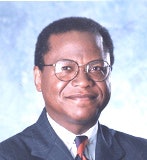 Alvin Schexnider
Alvin SchexniderRecently, the Center for Minority Serving Institutions, located at the University of Pennsylvania, released a new study that provides fresh insights on changes underway on Black college campuses. Aptly titled “The Changing face of Historically Black Colleges and Universities,” the report spotlights the value HBCUs add to American higher education — and in a way that enhances our understanding of the subject while underscoring its importance as an area of intellectual interest and scholarly pursuit.
This report is much needed and timely. It is needed because it fills a void by presenting empirical research that informs our understanding of Black colleges rather than relying on anecdotes and assertions. It is timely because it appears when the role of HBCUs is under increased scrutiny; they are under severe fiscal stress; and their future is imperiled by federal budget cuts including, for example, the Parents Plus Loan (PPL) Program.
Much of the literature about Black colleges ranges from the romantic to the negative. However well-intentioned, neither is a match for the solid research and data required to shape discussions and inform public policy regarding the sustainability of HBCUs. This is what makes the report’s findings significant. “The Changing Face of Historically Black Colleges and Universities” corrects misperceptions and provides refreshing insights. For example, it notes that Black colleges are often depicted as having lackluster retention and graduation rates. The report reminds us, however, that “most HBCUs are in the South, where all but four states have graduation rates below the national average.”
It will surprise some to learn that the demographic profile at HBCUs is changing consonant with national shifts: since 1980, Hispanic and Latino enrollment has increased by more than 123 percent while Asian enrollment has grown by 60 percent. Yet another surprise finding is that the average endowment at Black colleges is higher at public institutions than private ones, a matter of huge importance in the future. The report also focuses attention on the growing gender gap on HBCU campuses; at several institutions the percentage of females is above 70 percent, and this too has enormous implications for their individual futures and for public policy.
The lead author of the report, Professor Marybeth Gasman, is a highly regarded scholar on this subject. She has assembled and trained an impressive team of young researchers who are capable of improving our understanding of minority-serving institutions far into the future. As we move closer to becoming a nation of minorities and acquiring a better appreciation of the role of minority-serving institutions in the panoply of American higher education, their scholarship will be indispensable.
Alvin J. Schexnider is a former chancellor of Winston-Salem State University and the author of “Saving Black Colleges” (Palgrave Macmillan, fall 2013).


















